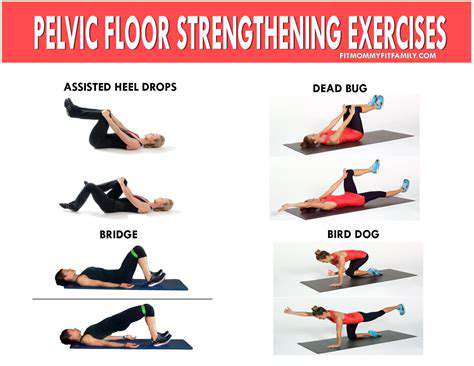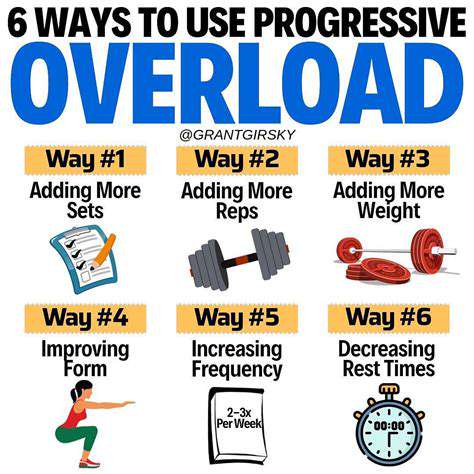How to Make Healthy Salad Dressings at Home

Tips and Tricks for Perfect Homemade Dressings
Empowering Flavor with Fresh Herbs
Incorporating fresh herbs is a game-changer for homemade dressings, adding depth and complexity without relying on excessive salt or sugar. Fresh basil, parsley, chives, or mint can transform a simple vinaigrette into a vibrant culinary experience. Experiment with different combinations to discover your favorite flavor profiles. Consider the overall flavor of your salad when choosing herbs; for example, a peppery arugula salad might pair wonderfully with a lemon-herb vinaigrette, while a more delicate spinach salad might be enhanced by a subtle dill or mint dressing.
Don't be afraid to blend in different types of herbs to create a unique flavor. A combination of basil and thyme might give a Mediterranean twist, while oregano and rosemary can evoke the warmth of Italian cuisine. Fresh herbs add a level of freshness unmatched by dried herbs, and their vibrant colors add a visual appeal to your finished dressing.
Elevating the Vinaigrette with Citrus Zest
Citrus zest adds a bright, refreshing touch to any vinaigrette. The zest of lemons, oranges, or limes provides a burst of flavor and aroma, lifting the overall taste experience. Using the zest instead of the juice concentrates the citrus flavor and adds a delightful textural element. It’s a simple technique that can significantly enhance the flavor profile of your homemade salad dressings, making them far more interesting than store-bought options.
For a subtle citrus note, use a little bit of zest; for a bolder flavor, feel free to incorporate more. Don't be afraid to experiment with different citrus fruits. A combination of orange and grapefruit zest can create a unique and complex flavor profile, while a simple lemon zest can brighten up a simple vinaigrette.
The Art of Balancing Acidity and Sweetness
Balancing acidity and sweetness is crucial for a well-rounded dressing. Acidity, often provided by vinegar or lemon juice, provides a tangy kick, while sweetness, from honey, maple syrup, or fruit purees, adds a touch of warmth and balance. Finding the perfect balance between these two elements is key to creating a dressing that complements your salad perfectly. A little experimentation can lead to a dressing that's both flavorful and delicious.
The Magic of Oil and Vinegar: The Foundation of a Great Dressing
Oil and vinegar form the backbone of most vinaigrettes. The type of oil you choose significantly impacts the dressing's texture and flavor. For a light and airy dressing, opt for extra virgin olive oil. For a richer, more intense flavor, use a nut oil like walnut or hazelnut oil. The type of vinegar you use also plays a crucial role. Balsamic vinegar provides a complex, sweet and tangy flavor, while apple cider vinegar offers a crisp and tart touch.
Adding Texture and Body with Mustard and Seeds
Mustard and seeds can add a delightful textural element and depth of flavor to your homemade dressings. Dijon mustard, for example, provides a smooth, slightly tangy flavor, while whole grain mustard offers a more robust taste and a delightful crunch. Adding seeds like sesame, poppy, or sunflower seeds adds a beautiful crunch and nutty flavor to your dressings. Experiment with different combinations of seeds and mustards to create a unique dressing that complements your salad perfectly.
Utilizing Spices and Seasonings for Enhanced Flavor
Don't underestimate the power of spices and seasonings in elevating your homemade dressings. A pinch of paprika adds a smoky flavor, while a dash of garlic powder or onion powder intensifies the savory notes. Nutmeg, ginger, or even a touch of cayenne pepper can add surprising dimensions to your dressings. Consider the overall flavor profile of your salad when selecting spices. A salad with roasted vegetables might pair well with a touch of smoked paprika, while a fresh green salad might benefit from a subtle touch of dill or oregano.
Storing and Reusing Your Homemade Dressings
Proper storage is vital for preserving the quality of your homemade dressings. Store dressings in airtight containers in the refrigerator. They should last for several days, but you can extend their shelf-life by adding a bit of lemon juice or vinegar to help preserve the dressing’s freshness. Using leftover dressing for other dishes like marinades or sauces is a great way to get creative and maximize your efforts.
Read more about How to Make Healthy Salad Dressings at Home
Hot Recommendations
-
*Guide to Managing Gout Through Diet
-
*Best Habits for Financial Well being
-
*How to Build a Routine for Better Mental Health
-
*How to Eat Healthy on a Budget [Tips & Meal Ideas]
-
*Guide to Practicing Self Acceptance
-
*How to Incorporate More Movement Into Your Day
-
*Guide to Managing Chronic Pain Naturally
-
*Guide to Building a Reading Habit for Well being
-
*Top 5 Weight Loss Supplements That Actually Work
-
*Best Exercises for Postpartum Recovery [Beyond Abdominal Work]

![Essential Health Screenings for Women [By Age]](/static/images/26/2025-05/ImportantConsiderationsAcrossAllAges.jpg)


![How to Choose Sustainable Seafood [A Guide]](/static/images/26/2025-05/ExploringSeafoodChoices3ASpeciesandRegionalConsiderations.jpg)




![How to Train for a 5K Run [Plan Included]](/static/images/26/2025-07/NutritionandRecoveryStrategiesforOptimalPerformance.jpg)
